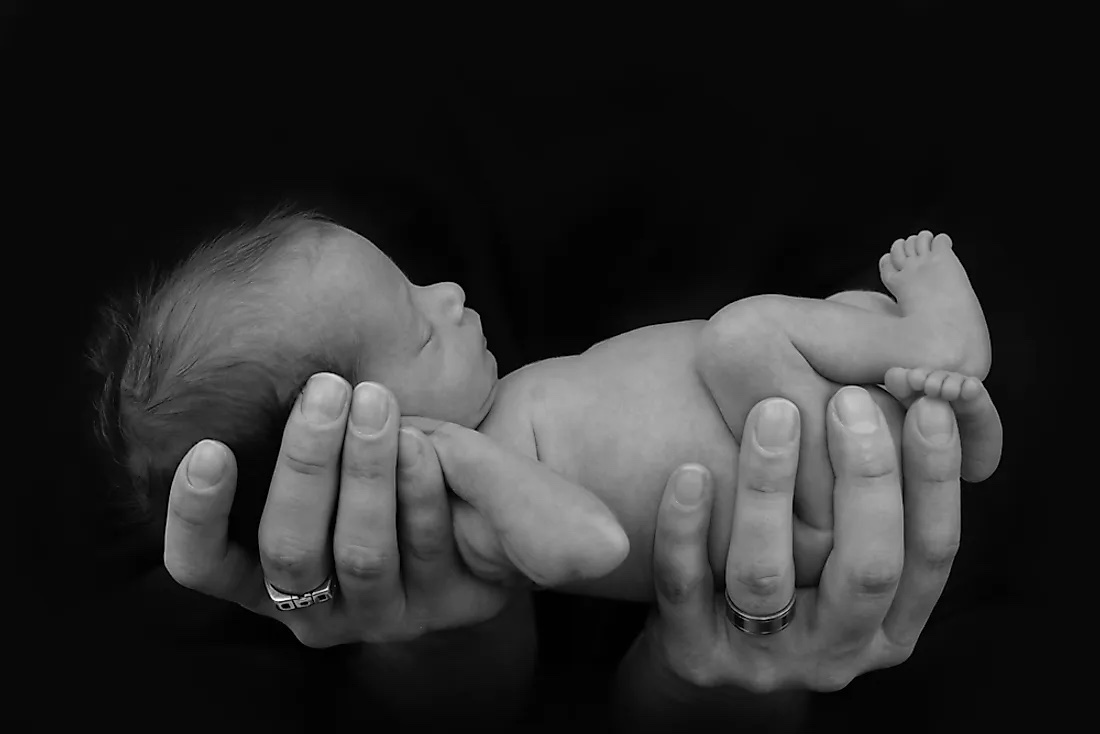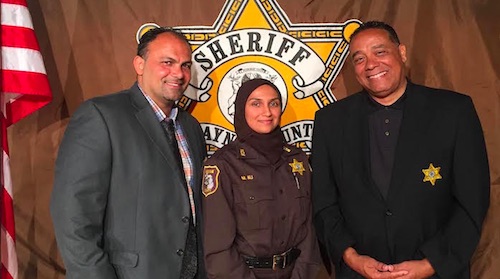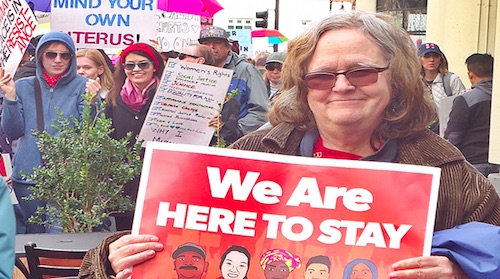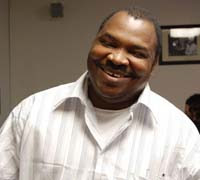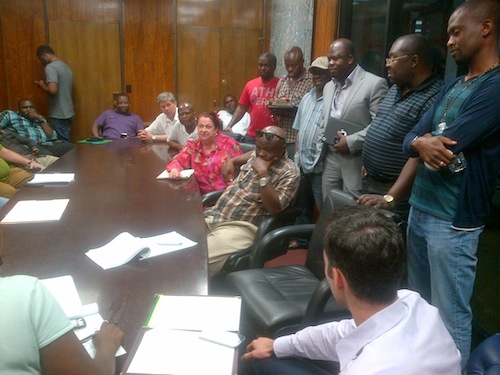Recent reports have shed light on a distressing trend: the mortality rates of children and adolescents have been rising in the United States over the past few years, and COVID-19 is not the primary driver of this increase. Between 2019 and 2021, there was a significant rise in all-cause child mortality, with a 10.7% increase in one year followed by an 8.3% increase the following year, marking the largest surge in decades. The leading causes of death among children and adolescents include suicide, homicide, drug overdoses, and car accidents.
One significant factor contributing to the risk of death among young people is firearms. Gun-related deaths among children in the U.S. have surged by 50% in just two years, and there have been 42 incidents of gunfire on school grounds in the current year alone, resulting in 17 deaths and 32 injuries nationwide. As a result, life expectancy in the country has declined.
Speakers at a recent panel discussion presented the latest research and discussed the main reasons behind this increase in child and adolescent mortality, as well as potential policies that could address this issue. The speakers included experts from various fields, such as Dr. Steven H. Woolf, a Professor of Family Medicine and Population Health at Virginia Commonwealth University School of Medicine, Kim Parker, Director of Social and Demographic Trends at PEW Research Center, Mayra Alvarez, President at The Children’s Partnership Research Center, and Kelly Sampson, Senior Counsel and Director of Racial Justice for Brady United.
Dr. Woolf highlighted that the panelists approached the issue from different disciplines, but shared a common interest in understanding this troubling trend. As a physician and public health researcher, Dr. Woolf focused on the health trends in the U.S. and the concerning increase in child and adolescent mortality. Historically, child mortality rates have been decreasing due to advancements in pediatric medicine and efforts to prevent leading causes of injury deaths, such as car accidents, drowning, and fires. However, recent data has shown that all-cause mortality among children and adolescents aged 1 to 19 has been on the rise, which is unusual and alarming.
Dr. Woolf noted that this increase in child and adolescent mortality cannot be solely attributed to COVID-19. While the pandemic has been ongoing during the time period of the observed increase, further analysis revealed that COVID-19 explained only a small portion of the rise in mortality rates. Instead, the increase was primarily driven by injury deaths and other external causes of death that have been persistent issues even before the pandemic.
The four main causes of death that have contributed to the increase in child and adolescent mortality are homicide, suicide, drug overdoses, and car accidents. Suicide rates have been on the rise since 2007, homicide rates since 2013, and drug overdose deaths since around 2018 or 2019, as more children and teenagers gained access to synthetic opioids, including Fentanyl. The COVID-19 pandemic may have exacerbated these trends, but the root causes predate the pandemic by several years.
Firearm-related deaths have played a significant role in the increase in child and adolescent mortality. Between 2019 and 2021, firearms accounted for approximately half of the overall increase in all-cause mortality in the 1 to 19 age group. Firearm deaths in this age group increased by 41%. Dr. Woolf emphasized that the subsequent panel discussion would delve deeper into the role of firearms in the rising mortality rates among children and adolescents, with insights from the research conducted by PEW Charitable Trust.
Dr. Woolf also highlighted the racial and ethnic disparities in the impact of these trends on young people. Black youth are at a considerably higher The black homicide rate among young people ages 10 to 19 increased by a staggering 50% between 2019 and 2020. In contrast, white youth experienced a 26% increase in homicide deaths during the same time period. This significant disparity in homicide rates by race and ethnicity highlights the disproportionate impact of violence on black youth in the United States.
Furthermore, when it comes to drug overdose deaths, Hispanic youth saw a staggering 142% increase between 2019 and 2020, while white youth experienced a 96% increase during the same time period. This indicates that the opioid epidemic has had a particularly devastating impact on Hispanic youth.
It’s also important to note that these concerning trends in child and adolescent mortality are not isolated incidents, but rather part of a larger pattern. For instance, the United States has long had higher rates of child and adolescent mortality compared to other industrialized countries. This can be attributed to various factors, including limited access to healthcare, health disparities, poverty, systemic racism, and easy access to firearms.
Addressing this alarming rise in child and adolescent mortality will require a multi-faceted approach. It will involve implementing evidence-based policies and interventions that address the root causes of these deaths, such as strengthening mental health services, reducing access to firearms, addressing substance abuse and addiction, addressing social determinants of health, promoting equity in healthcare access, and implementing community-based interventions that engage families, schools, and local communities.
Additionally, addressing the racial and ethnic disparities in child and adolescent mortality will require a targeted approach that addresses systemic racism, promotes social and economic equity, and ensures that all young people, regardless of their race or ethnicity, have equal access to opportunities for health and well-being.
In conclusion, the recent rise in child and adolescent mortality in the United States, driven by causes such as suicide, homicide, drug overdoses, and car accidents, is a concerning trend that demands urgent attention. It is clear that COVID-19 is not the sole cause of this increase, but rather a magnifier of pre-existing issues. Addressing the underlying factors contributing to these deaths, including social, economic, and racial disparities, and implementing evidence-based interventions is crucial to protecting the health and well-being of our nation’s youth.
Kim Parker, Director of Social and Demographic Trends at PEW Research Center, shared that while her main area of expertise is in public opinion and demographic research, the trend of gun deaths among children and teens is a topic that is very relevant in the national conversation. She highlighted data from the Centers for Disease Control and Prevention (CDC) that shows a sharp increase in both the number and rate of gun deaths among children and teens under the age of 18, particularly during the time frame of 2019 to 2021, which includes the period of the pandemic. According to the data, the number of gun deaths among children in this age group increased by 50% during this period, and the rate increased by 46%. Parker also mentioned that the data from the CDC looked specifically at children and teens under 18, while Dr. Wolf’s data may have included those up to 19 years old, which showed an even bigger increase in gun deaths among younger teens when excluding 18 and 19 year olds.
Parker further elaborated on the types of gun deaths among children, stating that homicides are the most common type of gun death among kids in the US, accounting for 60% of gun deaths in this age group in 2021, while suicides account for 32%. Among adults, however, suicides have long been the more dominant type of gun death, accounting for 55% of gun deaths among adults in 2021, compared to 42% for homicides. Parker also highlighted the racial differences in gun deaths among children, with black children and teens being more likely than white, Hispanic, and Asian children to die from gun-related injuries, and differences in the types of gun deaths by race as well.
Parker also referenced a survey conducted by the Pew Research Center among parents nationwide, which found that mental health was the top concern for parents, with 76% of parents reporting at least some concern that their children would struggle with anxiety or depression at some point, and 40% expressing extreme or very high concern about this issue. When specifically asked about concerns related to their children being shot, almost half of parents reported at least some concern, and 22% expressed extreme or very high concern about this issue. This data suggests that the environment in which parents and children are operating, including concerns about mental health, may be related to the findings on gun deaths among children and teens.
Mayra Alvarez, President at The Children’s Partnership Research Center, an advocacy organization in California working to advance Child Health Equity, expressed her gratitude for the opportunity to be part of the panel discussion and respond to the important issues raised. She shared that she comes to this space not only as an advocate for children but also as a mom, eagerly looking forward to seeing her own little girl turn two in July. She emphasized that the well-being and safety of children is upheld as a universal value on both sides of the political aisle and that special protections and privacy are traditionally afforded to children of the president, elected leaders, and even celebrities for good reason.
Mayra Alvarez pointed out that child mortality in the United States had been declining for decades thanks to advances in modern medicine, but this trend dramatically reversed between 2019 and 2021, with child and adolescent mortality rates rising by twenty percent, the largest increase in the last 50 years. She highlighted that these deaths are primarily due to preventable causes such as homicide, accidental drug overdoses, motor vehicle accidents, and suicide among children ages 10 to 19, which are man-made reasons and not biological. She stressed that these numbers are a wake-up call for all of us to take action and protect our kids, especially those in specific populations who are disproportionately impacted.
Mayra Alvarez emphasized the interconnectedness of many issues that affect families’ ability to raise healthy, thriving children, and the need for a holistic approach that involves parents, families, caregivers, educators, policymakers, community leaders, and every single one of us. She highlighted the importance of addressing gun safety and passing common-sense gun reforms to protect children from gun violence, as well as strengthening access to critical public benefit programs that provide health, food, housing, and other support to families in need. She noted that poverty is a contributing factor to the mental health challenges faced by families and emphasized the need to improve access to mental health services, particularly for children exposed to gun violence and those in low-income communities.
Mayra Alvarez also emphasized the importance of investing in community-centered mental health services and practices that center the experiences of young people and families and providing resources such as youth peer-to-peer programs to support each other. She urged for a robust focus on overall social-emotional and mental wellness, particularly for children of color who are disproportionately impacted by gun violence. Mayra Alvarez concluded by reiterating the urgent need to understand the causes of the rising child mortality rates and take immediate action to protect our children and ensure their well-being.
Kelly Sampson, Senior Counsel and Director of Racial Justice for Brady United began by expressing her appreciation for the audience’s engagement with the critical issue of gun violence, echoing the sentiments of previous speakers. As she delved into her prepared comments, she first addressed the question of race in relation to recent shootings, acknowledging that some of the shooters and victims were of different races.
Kelly emphasized that the United States’ unique relationship with firearms, which sets it apart from other countries, is deeply tied to its history of white supremacy and racism. She cited research showing how the Second Amendment and the concept of self-defense are racially coded in American culture, with self-defense often being associated with white males. She highlighted a study that revealed how the gun industry markets firearms by capitalizing on people’s fear of non-white individuals, perpetuating the notion of “scary people” who are not white as potential threats.
Kelly further explained that the issue of gun violence is not a naturally occurring phenomenon, but a result of systemic issues stemming from the country’s history of slavery, Jim Crow segregation, ongoing violence, and trauma. She referenced research that has shown how deliberate policy choices have marginalized black Americans socially, economically, and politically, contributing to the disproportionate impact of gun violence on black and brown communities.
As a gun violence prevention advocate, Kelly stressed the importance of addressing the role of the firearms industry in facilitating easy access to guns. She noted that the majority of guns originate from manufacturers who are supposed to comply with laws and regulations to prevent guns from falling into the wrong hands. However, she pointed out that the firearms industry, including manufacturers, dealers, and distributors, often evade transparency, accountability, and oversight, enabling the flow of guns into communities.
Kelly refuted the argument that “if someone wants to get a gun, they’re gonna get a gun” by emphasizing that the focus should not just be on laws that relate to purchasers, but also on laws that regulate the firearms industry as the source of guns. She drew an analogy to pollution, illustrating how addressing the issue of gun violence solely at the point of purchase is akin to trying to remove pollutants at the end of a river, without addressing the source upstream.
In conclusion, Kelly underscored the need for systemic solutions to address the systemic issue of gun violence, with a particular emphasis on the role of the firearms industry. She urged the audience to recognize the historical and ongoing impact of racism on gun violence and to work towards a future where all communities, regardless of race, can live free from the threat of gun violence.
#ChildMortality #YouthMortality #AlarmingTrend #ChildHealthCrisis #AdolescentMortality #USChildDeaths #MortalityRates #ChildHealthcare #PublicHealth #YouthWellbeing

